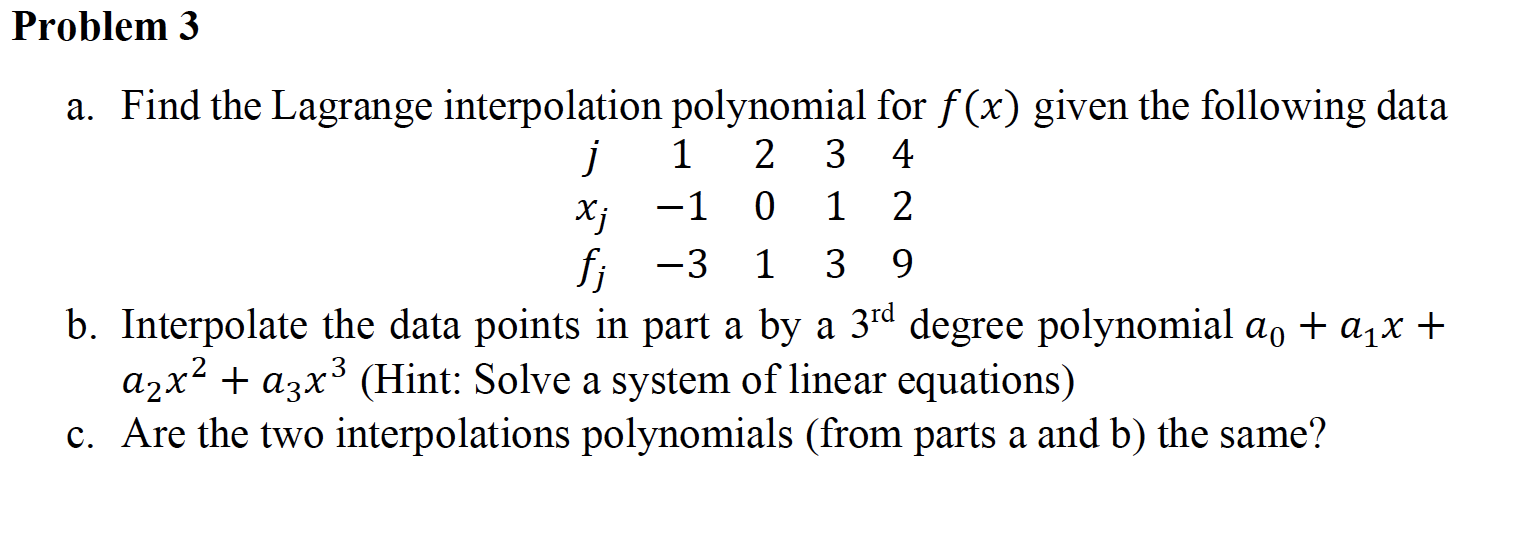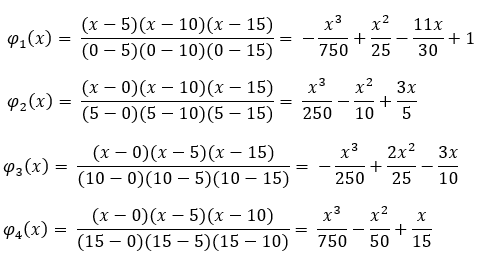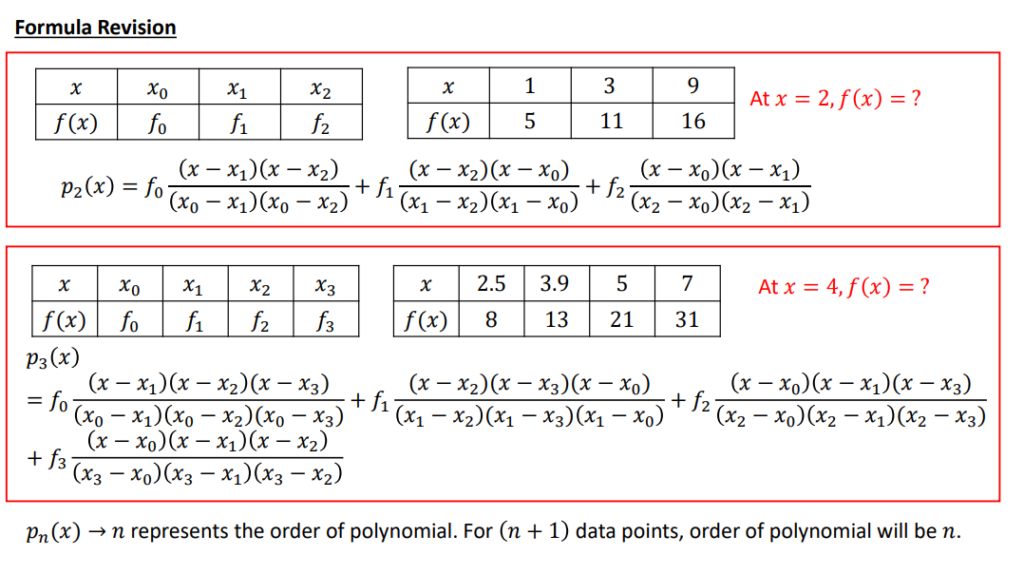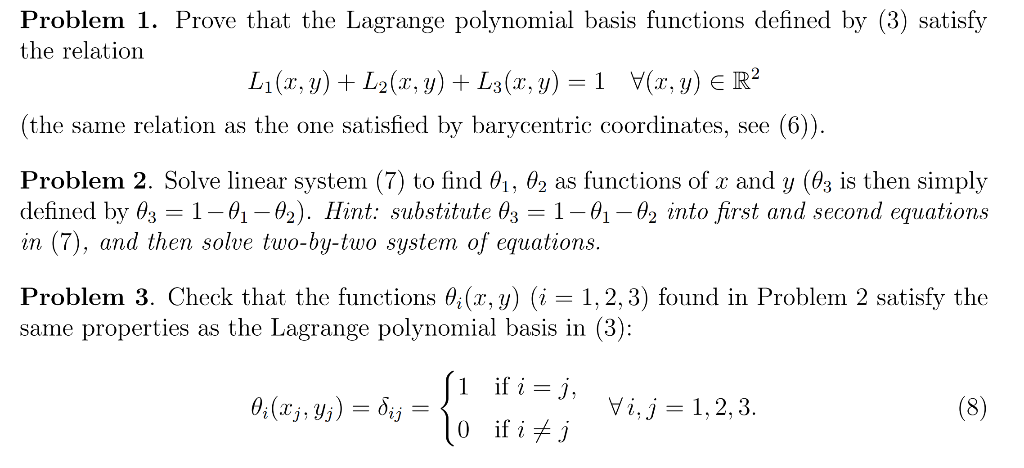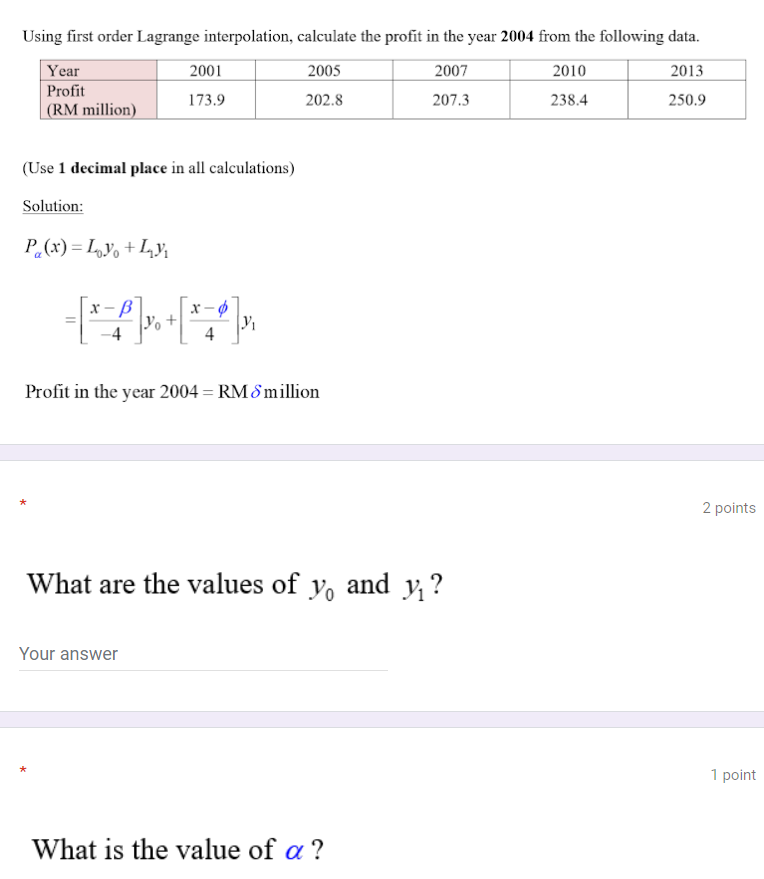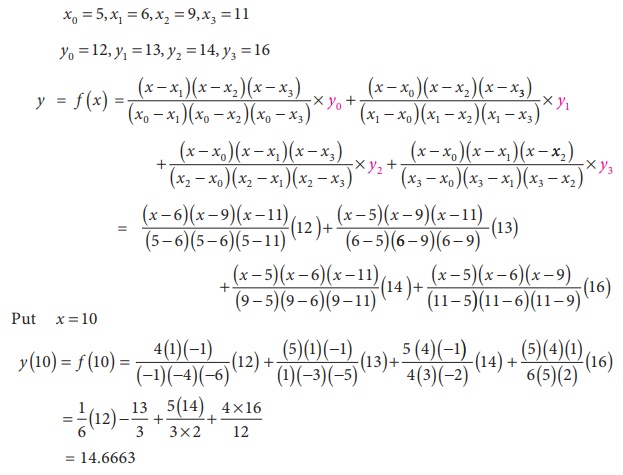Using Lagrange's interpolation formula find a polynomial which passes through the points (0, -12), (1, 0), (3, 6) and (4, 12). - Sarthaks eConnect | Largest Online Education Community
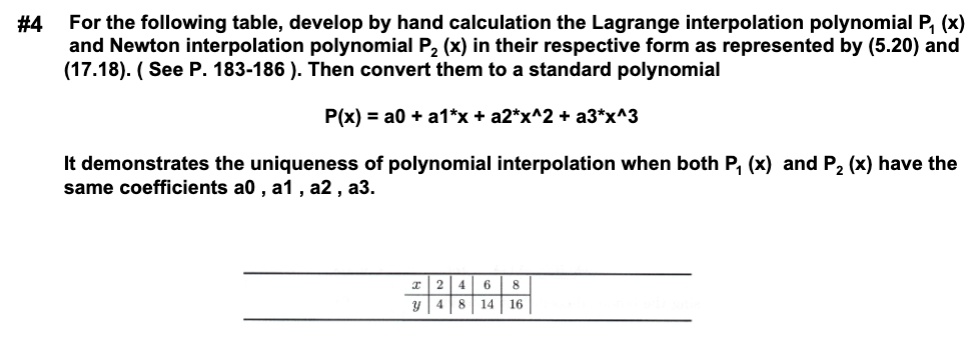
SOLVED: #4 For the following table; develop by hand calculation the Lagrange interpolation polynomial Pz (x) and Newton interpolation polynomial Pz (x) in their respective form as represented by (5.20) and (17.18):
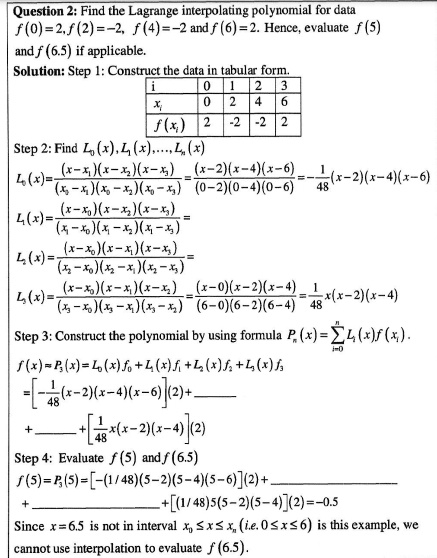
SOLVED: Question 2; Find the Lagrange interpolating polynomial for data f (0)-2,f (2)–2 f(4)=-2 ad f (6)=2 Hence , evaluate f(5) and f (6.5) if applicable. Solution: Step [: Constructthe datain tabular
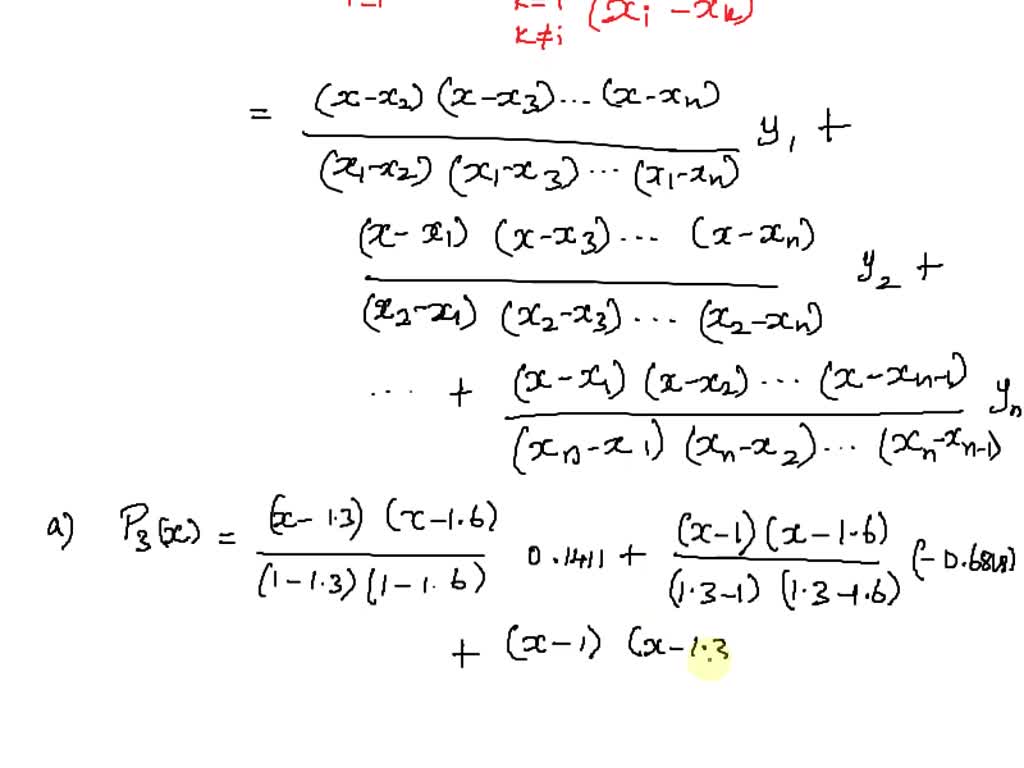
SOLVED: Lagrange Polynomial Study Questions Example: For given f (x) = sin3x function input-output table is given as below: Find second order Lagrange interpolating polynomial for f(x) using input-output table Find the

Using Lagrange's interpolation formula, find the cubic polynomial that takes the following values. M3 Notes & question answer collection

Lagrange's Interpolation formula for unequal intervals l Lagrange interpolation formula in tamil - YouTube
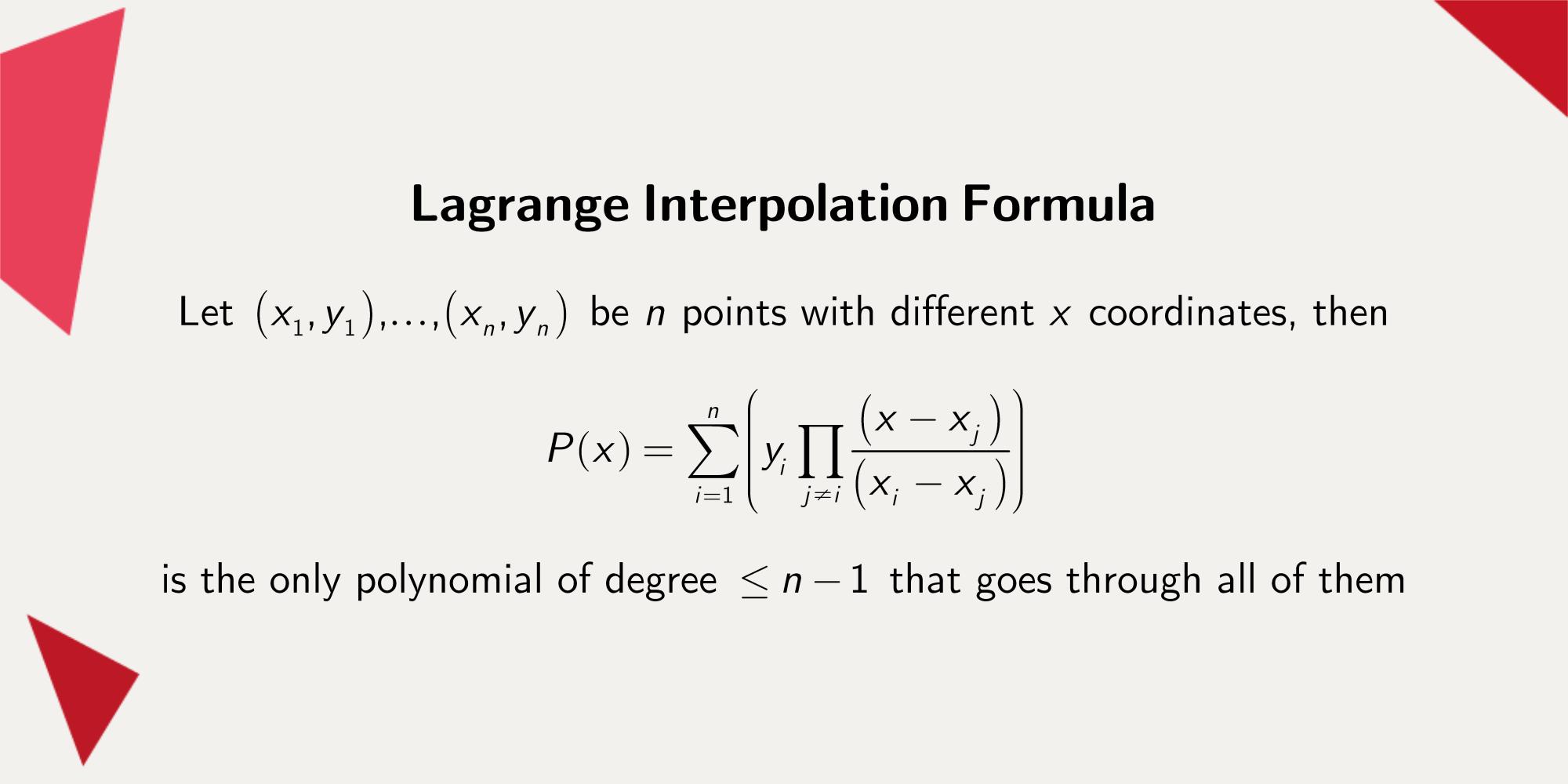
MathType on Twitter: "Lagrange's Interpolation Formula was independently derived in 1779 by Waring and in 1795 by Lagrange. Upon closer inspection the formula is simpler than it seems but it has been

SOLVED: Q2) (25 p.) a) Use Lagrange interpolation polynomial to derive the numerical differentiation formula 2f (xo)-Sf (xoth)+4f(xo+2h)-f(xo+3h) f" (xo) = h2 b) Let f(x) = (x3 + Sx)3 use above formula



